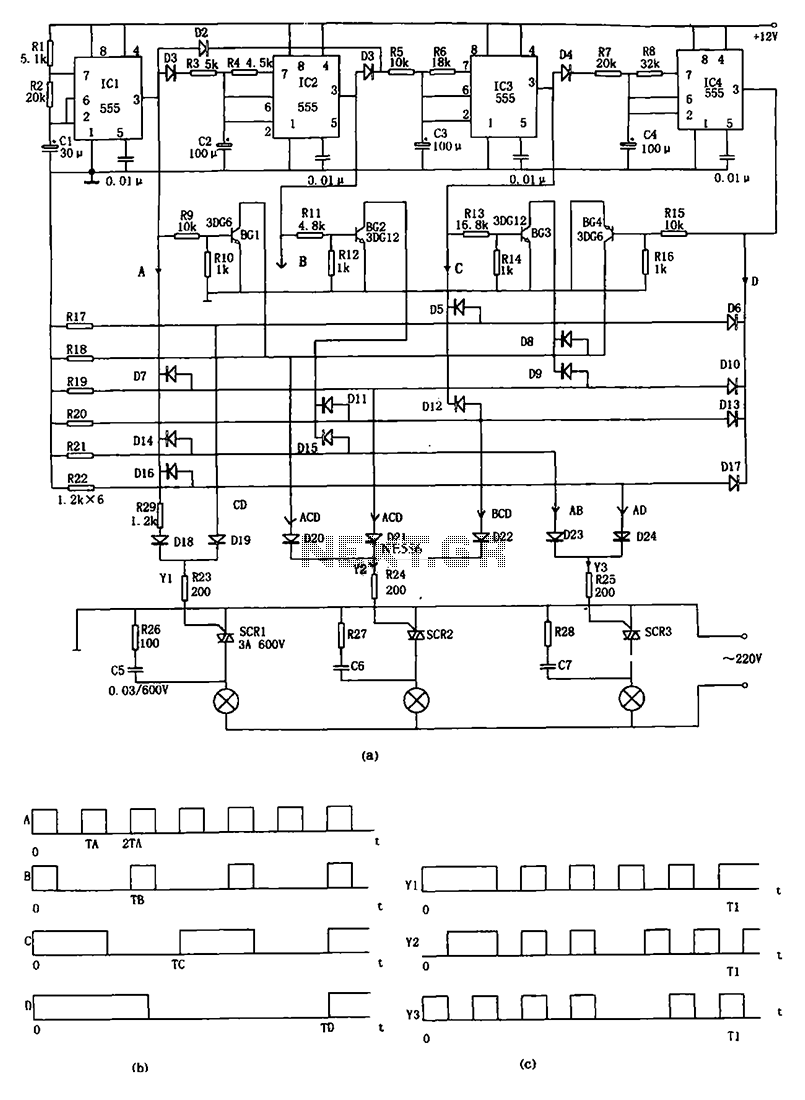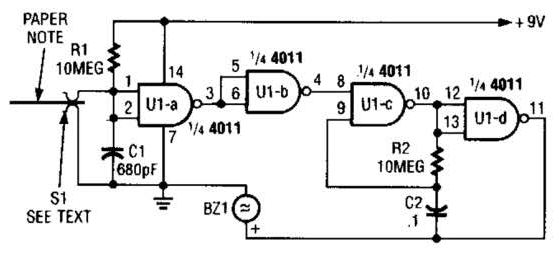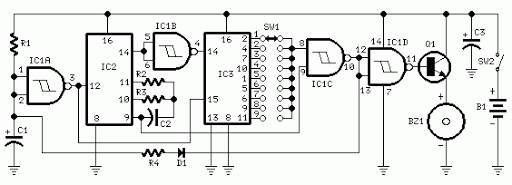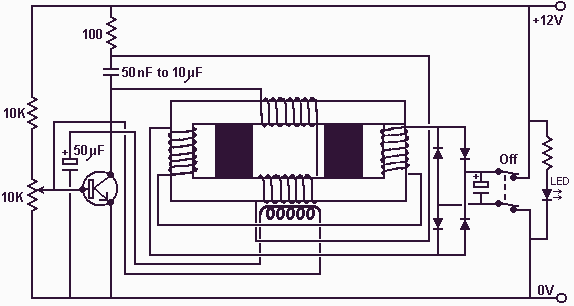
Using an inverter transistor monostable circuit diagram
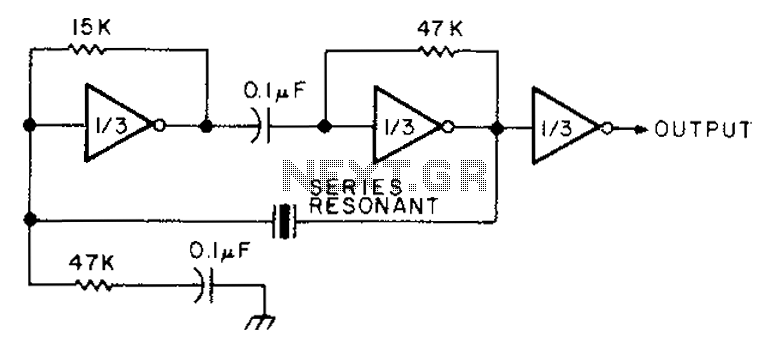
The circuit diagram illustrates the connection of all three components of the series resonant crystal and triple CD4049 inverter. The supply voltage range is between 3 to 15 volts, making it suitable for various applications. This design is compact and features low power consumption, ideal for portable battery-operated devices.
The circuit employs a series resonant crystal oscillator configuration, which is known for its ability to generate stable frequency signals. The inclusion of the triple CD4049 inverter facilitates signal shaping and amplification, allowing for improved performance in RF applications. The CD4049 is a hex inverting buffer, and in this configuration, three of its inverters are utilized to create a robust oscillator circuit.
The resonant crystal is pivotal in determining the operating frequency of the oscillator. It is connected in series with the inverter and other passive components, such as resistors and capacitors, which are essential for tuning the circuit and stabilizing the output frequency. The supply voltage range of 3 to 15 volts provides flexibility in power supply options, accommodating both low-power and higher-power applications.
The low-power characteristics of this circuit make it particularly advantageous for battery-operated devices, extending the operational life of the battery. Additionally, the compact nature of the design allows for easy integration into various electronic projects, including RF transmitters and receivers, where space and power efficiency are critical.
Overall, this circuit design exemplifies an effective approach to creating a portable RF oscillator with minimal power requirements, suitable for a wide range of electronic applications. Circuit diagram all three parts of the series resonant crystal and triple CD4049 inverter connection. Supply voltage range is 3-15V. Compact, low-power RF oscillator portable b attery consumption is very low.
The circuit employs a series resonant crystal oscillator configuration, which is known for its ability to generate stable frequency signals. The inclusion of the triple CD4049 inverter facilitates signal shaping and amplification, allowing for improved performance in RF applications. The CD4049 is a hex inverting buffer, and in this configuration, three of its inverters are utilized to create a robust oscillator circuit.
The resonant crystal is pivotal in determining the operating frequency of the oscillator. It is connected in series with the inverter and other passive components, such as resistors and capacitors, which are essential for tuning the circuit and stabilizing the output frequency. The supply voltage range of 3 to 15 volts provides flexibility in power supply options, accommodating both low-power and higher-power applications.
The low-power characteristics of this circuit make it particularly advantageous for battery-operated devices, extending the operational life of the battery. Additionally, the compact nature of the design allows for easy integration into various electronic projects, including RF transmitters and receivers, where space and power efficiency are critical.
Overall, this circuit design exemplifies an effective approach to creating a portable RF oscillator with minimal power requirements, suitable for a wide range of electronic applications. Circuit diagram all three parts of the series resonant crystal and triple CD4049 inverter connection. Supply voltage range is 3-15V. Compact, low-power RF oscillator portable b attery consumption is very low.
